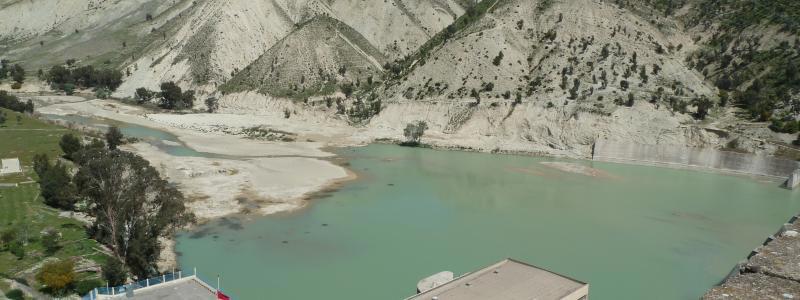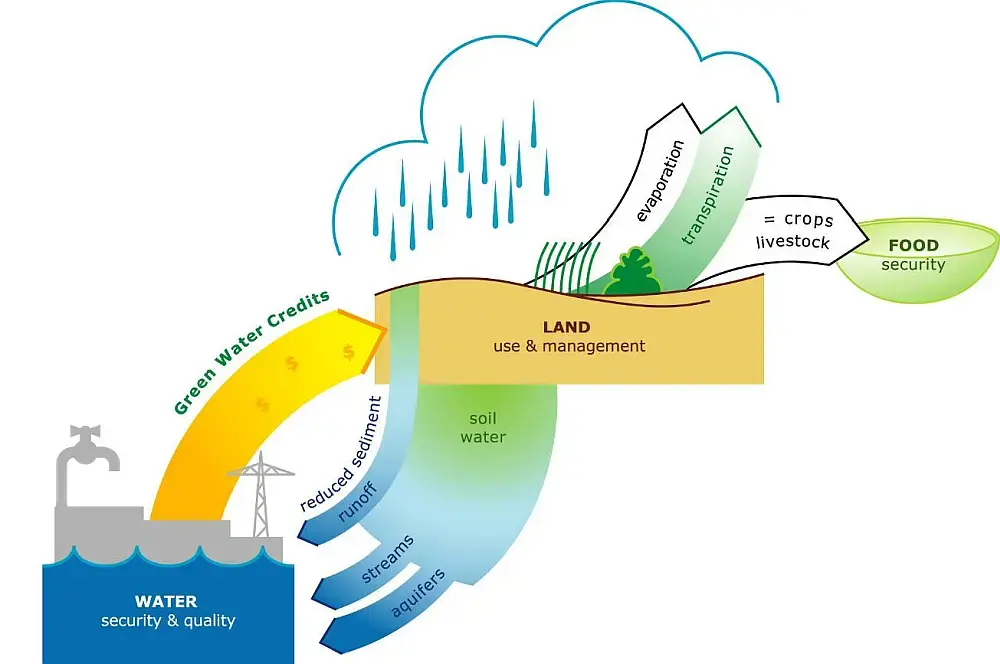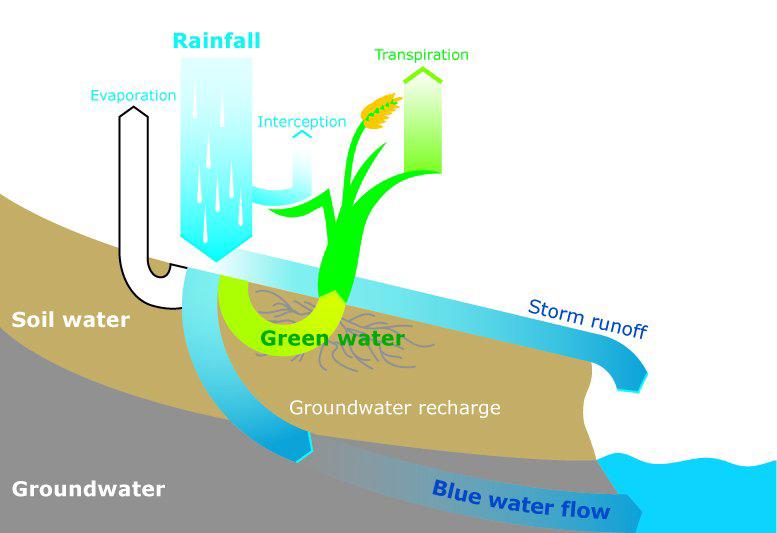Green water is the water held in soil and available to plants. It is the largest freshwater resource but can only be used in situ, by plants. Green water is managed by farmers, foresters, and pasture or rangeland users.
Bluewater is groundwater and streamflow, supporting aquatic ecosystems and that can be tapped for use elsewhere: for domestic and livestock water, irrigation, industrial and urban use. Bluewater flow and resources, in quantity and quality, are closely determined by the management practices of upstream land users.
Green water management comprises effective soil and water conservation practices put in place by land users. These practices address sustainable water resource utilisation in a catchment, or a river basin, at the source. Green water management increases productive transpiration, reduces soil surface evaporation, controls runoff, encourages groundwater recharge, and decreases flooding. It links water that falls on rainfed land and is used there, to the water resources of rivers, lakes, and groundwater: green water management aims to optimise the partitioning between green and blue water to generate benefits both for upstream land users and downstream consumers.
Green Water Credits (GWC) is a financial mechanism that supports upstream farmers to invest in improved green water management practices. Those farmers will benefit directly, but the benefits may not be sufficient to compensate for their investments. To support these investments, a GWC fund needs to be created by downstream private and public water-use beneficiaries. Initially, however, public funds may be required to bridge the gap between investments by upstream land users and the realisation of the benefits by those downstream.




